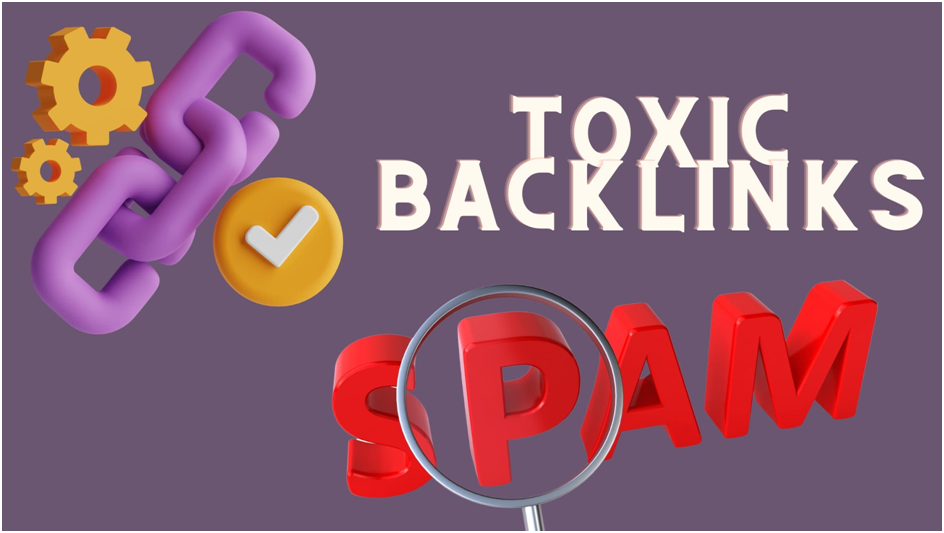How to Identify and Avoid Toxic Backlinks

In the world of search engine optimization (SEO), backlinks play a crucial role in boosting a website’s authority and improving its search engine rankings. However, not all backlinks are created equal. While some backlinks can propel your site to the top of search engine results, others can cause significant harm. These harmful links are known as toxic backlinks.
Toxic backlinks are links that originate from low-quality, spammy, or irrelevant websites, and they can lead to severe penalties from search engines like Google. As search algorithms evolve, they have become more adept at identifying toxic backlinks and devaluing their impact. Therefore, it is essential to understand how to identify and avoid toxic backlinks to protect your website’s SEO performance and online reputation.
In this blog, we will explore the importance of backlinks, how to identify toxic backlinks, the potential risks they pose, and most importantly, how to avoid them using proven strategies and tools. The insights shared here, supported by the expertise of Ranking Mates, will help you safeguard your website’s SEO health and maintain a solid backlink profile.
What Are Toxic Backlinks?
A toxic backlink is a link that points to your website from an untrustworthy, irrelevant, or low-quality source. These backlinks can negatively impact your SEO by either lowering your website’s rankings or even causing penalties. Toxic backlinks come in many forms, and they often originate from sites with little authority, suspicious domains, or harmful content.
Common characteristics of toxic backlinks include:
- Links from spammy websites or irrelevant content
- Links from sites with poor domain authority
- Links from websites involved in black-hat SEO practices
- Links from link farms or paid link networks
- Links from sites with a history of penalties or bans
Google’s algorithms, especially the Penguin update and its advanced version, Penguin 4.0, are engineered to penalize websites that engage in manipulative link-building techniques or acquire backlinks from unreliable and spammy sources. Therefore, it is vital to identify and address toxic backlinks to maintain the health and credibility of your website’s SEO efforts.
Why Toxic Backlinks Are Dangerous for Your Website
- Loss of Organic Traffic
Backlinks from toxic sources can lead to a significant drop in organic search rankings. Search engines like Google evaluate the quality of the websites linking to your site, and when they detect links from untrustworthy sources, your rankings may fall, resulting in a decrease in organic traffic. - Penalties from Search Engines
Toxic backlinks are considered a violation of Google’s guidelines, especially if they were acquired through manipulative or spammy techniques. When Google detects unnatural backlink patterns, your website could be subjected to penalties, which may result in reduced visibility or even removal from search results altogether. - Damaged Domain Authority
Google and other search engines assess your site’s authority based on the quality of backlinks you receive. Toxic backlinks lower your website’s domain authority, which can affect its ability to rank well on search engines. - Reputation Damage
Having links from dubious websites can harm your brand’s reputation, as users may associate your website with low-quality content or unethical practices. This can lead to a loss of trust and a decline in customer confidence. - Increased Crawl Budget Wastage
Search engines allocate a specific crawl budget to websites. Toxic backlinks from spammy or irrelevant sources waste your crawl budget, leaving fewer resources available for crawling and indexing important pages on your site.
How to Identify Toxic Backlinks
Identifying toxic backlinks is the first step toward protecting your website from SEO penalties. Fortunately, several tools and techniques are available to help you assess your backlink profile and pinpoint harmful links. Here’s a step-by-step guide:
1. Conduct a Backlink Audit
A backlink audit is essential for identifying both harmful and beneficial backlinks. Use SEO tools such as Ahrefs, SEMrush, or Moz to gather a comprehensive list of all backlinks pointing to your website. These tools will provide valuable information about the quality and relevance of each link. Look for the following red flags:
- Low Domain Authority (DA): Backlinks from websites with a low domain authority (DA) or page authority (PA) are likely to be toxic. Check the DA using tools like Moz’s Open Site Explorer.
- Unnatural Link Patterns: A sudden spike in backlinks or backlinks from unrelated sites can signal manipulative link-building practices.
- Anchor Text Over-Optimization: If a large percentage of your backlinks use the same anchor text (particularly keyword-rich or exact match), this is a potential sign of unnatural link building.
2. Check for Spammy Sources
Spammy websites often have little-to-no content, filled with ads, pop-ups, or irrelevant material. Links from these sites can significantly harm your SEO efforts. Look for:
- Link Farms: A link farm is a network of websites designed to artificially boost rankings by exchanging links. These are often low-quality sites with irrelevant content.
- Adult, Gambling, or Malware Sites: Links from websites involved in adult content, gambling, or those infected with malware can hurt your website’s credibility and ranking.
3. Assess the Relevance of Linking Websites
Relevance is a critical factor when assessing backlinks. If your website is in the tech industry, for instance, backlinks from a health or fashion website may be deemed irrelevant and could be harmful. To evaluate relevance, consider:
- Industry Consistency: Links should come from websites within the same industry or niche as yours to maintain relevance.
- Content Context: Ensure the linked content aligns with the subject of the page linking to you. A backlink from a blog about fitness to a page about gardening may appear unnatural.
4. Look for Over-Optimized Anchor Text
The anchor text of backlinks should appear natural and diverse. Over-optimized anchor text (using the same keyword or phrase repeatedly) can trigger a red flag for search engines. Natural backlinks should contain a variety of anchor texts, including branded, generic, and related keywords.
5. Identify Paid Links
Links that have been purchased or exchanged as part of a link-building scheme are considered toxic. While paid links were once common, they violate Google’s guidelines. Look for signs of paid links, such as unusual link patterns or explicit statements about payment for links.
6. Use Google Search Console
Google Search Console provides detailed information about the backlinks pointing to your website. It can help you identify links from suspicious or spammy sources. If Google identifies toxic backlinks, they may send you a manual penalty notification.

How to Disavow Toxic Backlinks
Once you’ve identified toxic backlinks, the next step is to remove or disavow them. Here’s how to proceed:
1. Request Link Removal
Reach out to the webmasters of the sites that are linking to you and request that they remove the toxic backlinks. This can be time-consuming, but it is often the most effective way to clean up your backlink profile.
2. Disavow Toxic Links Using Google’s Disavow Tool
If link removal is not possible, you can use Google’s Disavow Tool to tell Google to ignore certain backlinks. Create a disavow file, listing the URLs or domains you want Google to disregard, and upload it to your Google Search Console account. Use this tool with caution—only disavow links that you are certain are harmful.
How to Avoid Toxic Backlinks
Preventing toxic backlinks from entering your backlink profile is key to maintaining a healthy SEO strategy. Here are a few tips to avoid harmful backlinks:
- Focus on High-Quality, Relevant Links Build your backlinks naturally by focusing on high-quality, relevant websites within your industry. Guest posting, content marketing, and influencer outreach are great ways to earn legitimate backlinks.
- Monitor Your Backlink Profile RegularlyRegularly audit your backlink profile using tools like Ahrefs, SEMrush, or Ranking Mates. This will help you stay on top of new backlinks and quickly identify potential issues.
- Avoid Black-Hat SEO Techniques Stay away from manipulative SEO tactics like buying links, participating in link schemes, or using spammy tactics to gain backlinks. Stick to ethical, white-hat SEO strategies for sustainable results.
- Use NoFollow Links Where Appropriate For links that you don’t want to pass SEO value (such as sponsored content or user-generated content), use the rel=”nofollow” attribute. This prevents search engines from following the link and passing authority to your website.
- Keep Your Content High-Quality Creating high-quality content that naturally attracts backlinks from reputable sources is the best way to build a strong backlink profile. When others link to your content, it signals trust and relevance to search engines.
Conclusion
Toxic backlinks can be a silent killer of your SEO efforts. Identifying and removing these harmful links is crucial to maintaining your website’s rankings, credibility, and long-term online success. Regularly auditing your backlink profile, focusing on high-quality link-building strategies, and staying informed about Google’s guidelines will help ensure that your website remains on the right side of SEO.
With the help of tools like Ranking Mates, you can easily monitor your backlinks, disavow harmful links, and build a robust SEO strategy that drives sustainable growth. Always remember: a clean, relevant backlink profile is key to staying ahead of the competition and ensuring your website’s visibility in search engine results.





